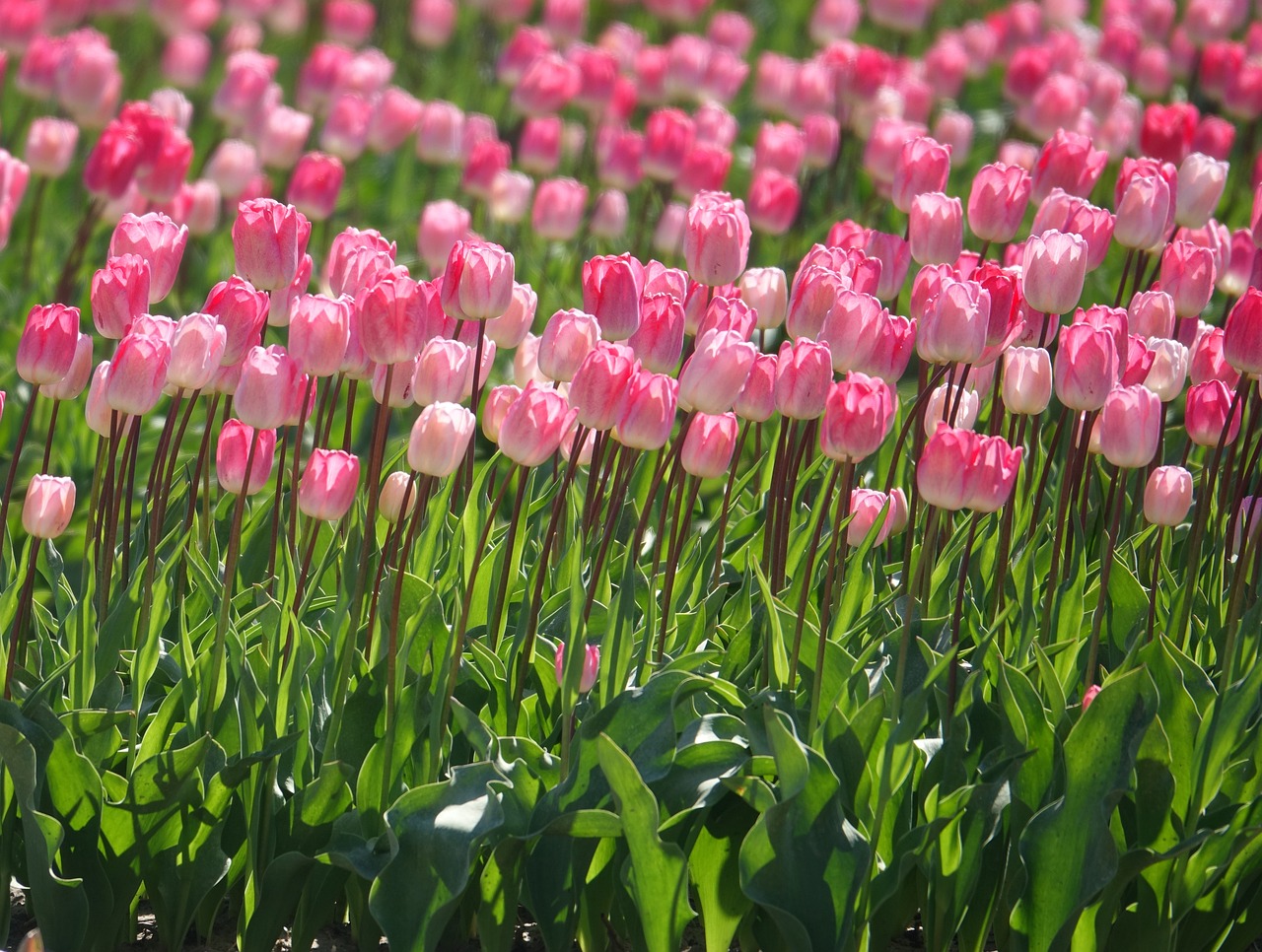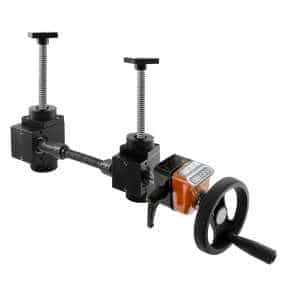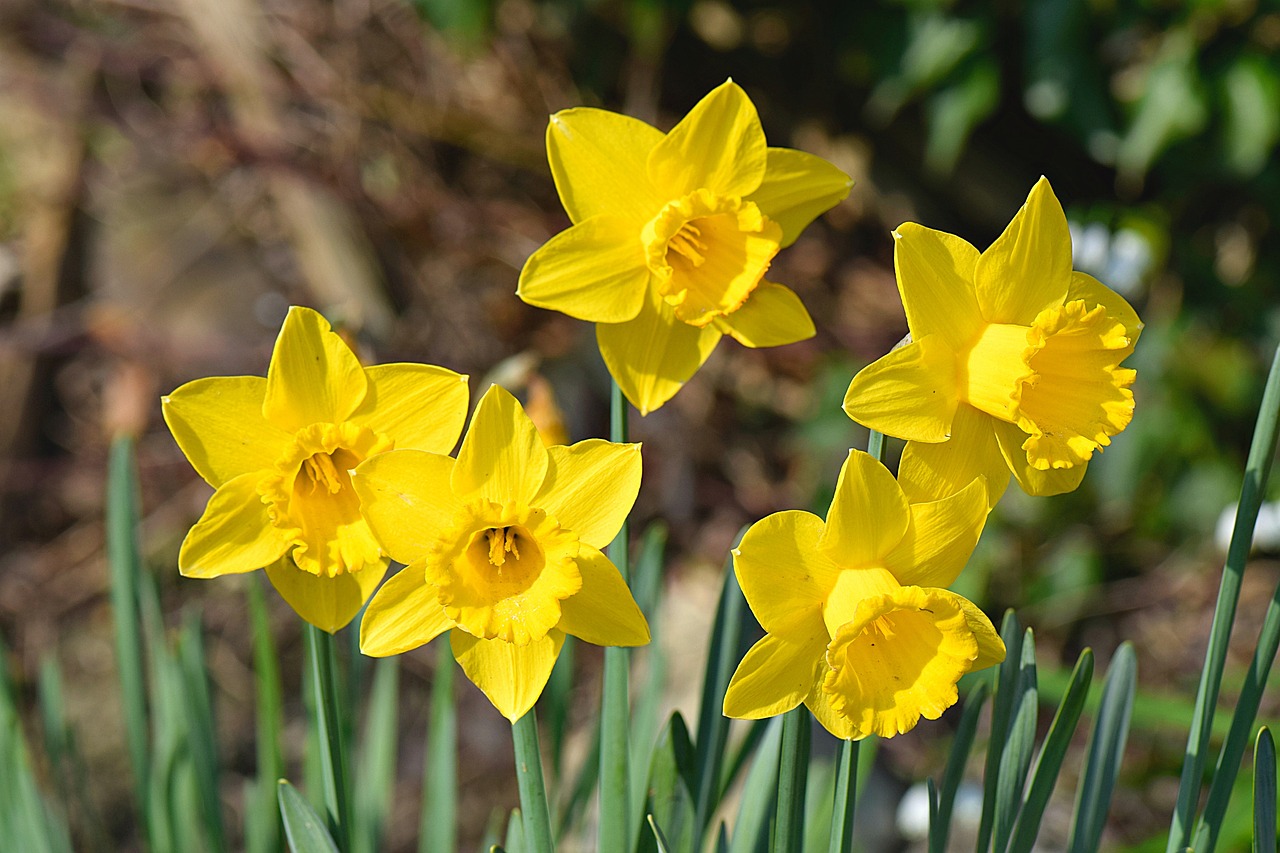How to Plant and Lift Tulip Bulbs
News Feb 18, 2024

Are you ready to bring a burst of color and beauty to your garden? In this article, we will guide you through the process of planting and lifting tulip bulbs, ensuring that you can enjoy a stunning display of flowers year after year. Whether you’re a seasoned gardener or just starting out, these step-by-step instructions will help you achieve success and create a vibrant garden that will leave your neighbors in awe.
First, let’s talk about planting tulip bulbs. Before you begin, it’s important to choose the right bulbs for your garden. Consider factors such as bulb size, color, and bloom time to create a harmonious and visually appealing display. Once you have selected your bulbs, it’s time to prepare the soil. This step is crucial for providing the optimal growing conditions for your tulips.
Preparing the soil involves a few key considerations. Firstly, ensure that the soil is well-drained to prevent waterlogging, which can lead to bulb rot. You can improve drainage by adding organic matter, such as compost or well-rotted manure, to the soil. Secondly, tulips prefer a slightly acidic to neutral soil pH. Test your soil and make any necessary adjustments to create the ideal pH level. Lastly, fertilize the soil with a balanced bulb fertilizer to provide the necessary nutrients for healthy growth.
Now that your soil is ready, it’s time to plant the bulbs. The planting depth and spacing of tulip bulbs are essential for their proper development. As a general rule, plant bulbs at a depth that is two to three times their height. This means that larger bulbs will require a deeper planting depth than smaller ones. Additionally, space the bulbs at least two bulb widths apart to prevent overcrowding and ensure adequate airflow.
When it comes to planting techniques, there are several options to consider. Traditional planting in beds or borders is a popular choice, allowing you to create stunning displays. Container planting is another option, perfect for those with limited space or for adding a splash of color to patios and balconies. Naturalizing is a technique where bulbs are planted in a more random and natural pattern, mimicking how bulbs grow in the wild. Choose the method that best suits your garden and personal preferences.
Once your tulip bulbs are planted, it’s important to take protective measures to ensure their success. Pests, diseases, and harsh weather conditions can pose a threat to your bulbs. Consider using physical barriers, such as wire mesh, to protect bulbs from burrowing animals. Apply organic pest control methods, such as neem oil or insecticidal soap, to keep pests at bay. Additionally, monitor your bulbs closely and take appropriate action at the first sign of disease or damage.
Now that your tulips are in full bloom, it’s time to care for them to ensure their longevity. Proper watering is crucial, especially during dry periods. Aim to keep the soil consistently moist but not waterlogged. Applying a layer of mulch around the base of the plants will help retain moisture and suppress weed growth. Deadheading, or removing spent flowers, will encourage the plant to channel its energy into producing new blooms. With these care tips, your tulips will thrive and reward you with a breathtaking display of flowers.
As the season comes to an end and your tulips have finished flowering, it’s time to lift and store the bulbs for future use. Lifting tulip bulbs involves carefully digging them out of the ground without damaging them. Use a garden fork or shovel to gently loosen the soil around the bulbs, then lift them out. Remove any excess soil and inspect the bulbs for any signs of damage or disease.
Once the bulbs are lifted, it’s important to clean and store them properly. Remove any remaining foliage and allow the bulbs to dry in a well-ventilated area for a few days. This will help prevent rotting during storage. Once dry, store the bulbs in a cool, dry place, such as a paper bag or mesh container. Be sure to label the bulbs to keep track of their variety and planting location.
In conclusion, planting and lifting tulip bulbs is a rewarding and enjoyable process that will bring beauty and color to your garden. By following these step-by-step instructions, you can ensure the success of your tulips and create a stunning display that will be the envy of your neighborhood. So grab your gardening tools and get ready to embark on a tulip-filled journey that will leave you in awe of nature’s wonders.
Choosing the Right Bulbs
Table of Contents
Choosing the right bulbs is an important step in creating a stunning tulip display in your garden. There are various types of tulip bulbs available, each offering unique characteristics that can enhance the beauty of your outdoor space. When selecting bulbs, it’s essential to consider factors such as size, color, and bloom times to ensure a harmonious and visually appealing arrangement.
One way to categorize tulip bulbs is by their size. There are three main sizes: small, medium, and large. Small bulbs are ideal for creating delicate and intricate flower arrangements, while medium bulbs are versatile and can be used in a variety of garden settings. Large bulbs, on the other hand, produce robust and showy blooms that make a bold statement in any landscape.
Another important consideration is the color of the tulip bulbs. Tulips come in a wide range of colors, from vibrant reds and oranges to soft pinks and purples. By selecting bulbs in different colors, you can create a visually captivating display that adds depth and interest to your garden. Consider the overall color scheme of your outdoor space and choose tulip bulbs that complement or contrast with the existing plants and décor.
Bloom times are also crucial when choosing tulip bulbs. Some tulips bloom early in the spring, while others bloom later in the season. By selecting a variety of tulip bulbs with different bloom times, you can extend the flowering period and enjoy a continuous display of vibrant blooms throughout the spring. This will add a sense of anticipation and excitement to your garden as you watch the tulips unfold their beauty one after another.
In summary, choosing the right bulbs is essential for a successful tulip display. Consider the size, color, and bloom times of the tulip bulbs to create a visually appealing arrangement that adds beauty and vibrancy to your garden. By making an informed decision when selecting bulbs, you can ensure a stunning and harmonious display of tulips that will be the envy of your neighbors.
Preparing the Soil
Preparing the soil is a crucial step in ensuring the success of your tulip bulbs. By taking the time to properly prepare the soil, you can create optimal growing conditions that will promote healthy growth and vibrant blooms. Here are some important tips to consider when preparing the soil for planting tulip bulbs:
- Soil Composition: Tulip bulbs thrive in well-draining soil that is rich in organic matter. Before planting, make sure to amend your soil with compost or well-rotted manure to improve its fertility and structure.
- Drainage: Good drainage is essential for the health of tulip bulbs. If your soil tends to be heavy or clayey, consider adding sand or perlite to improve drainage. Avoid planting in areas with poor drainage, as this can lead to bulb rot.
- Fertilization: Tulip bulbs benefit from a balanced fertilizer that is low in nitrogen and high in phosphorus and potassium. Before planting, incorporate a slow-release bulb fertilizer into the soil to provide essential nutrients for growth.
By following these tips, you can create the ideal growing conditions for your tulip bulbs. Remember to always check the specific requirements of the tulip variety you are planting, as different types may have slightly different soil preferences. Taking the time to prepare the soil properly will greatly increase the chances of a successful and beautiful display of tulips in your garden.
Planting Depth and Spacing
When it comes to planting tulip bulbs, getting the planting depth and spacing right is crucial for their successful growth. The recommended planting depth for tulip bulbs is typically about 6 to 8 inches deep. This allows the bulbs to establish a strong root system and ensures that they are protected from frost during the winter months. However, it’s important to check the specific planting instructions provided with your bulbs, as different varieties may have slightly different depth requirements.
In terms of spacing, tulip bulbs should be planted about 4 to 6 inches apart from each other. This allows enough room for the bulbs to develop and prevents overcrowding, which can lead to stunted growth and poor flowering. If you’re planting in rows or clusters, make sure to maintain the recommended spacing between each bulb to create a visually appealing display.
Planting Techniques
When it comes to planting tulip bulbs, there are various techniques you can explore to find the best method for your specific garden needs. Let’s take a closer look at some of these planting techniques:
- Traditional Planting in Beds or Borders: This is the most common method of planting tulip bulbs. You can create beautiful displays by planting bulbs in designated beds or borders in your garden. Make sure to prepare the soil properly and follow the recommended planting depth and spacing.
- Container Planting: If you have limited space or want to add tulips to your patio or balcony, container planting is a great option. Choose a container with good drainage and fill it with well-draining soil. Place the bulbs at the appropriate depth and spacing, and ensure they receive enough sunlight.
- Naturalizing: This planting technique involves scattering tulip bulbs in a more natural and random manner, mimicking how they would grow in the wild. This creates a more relaxed and informal look in your garden. Choose an area with good soil and simply scatter the bulbs, ensuring they are planted at the recommended depth.
By exploring these different planting techniques, you can find the one that suits your garden style and preferences. Whether you prefer a traditional, formal display or a more natural and effortless look, there is a planting technique that will help you achieve the desired effect.
Protective Measures
Protective Measures
When it comes to ensuring the health and beauty of your tulip bulbs, taking protective measures is essential. By implementing these measures, you can safeguard your bulbs from pests, diseases, and harsh weather conditions, giving them the best chance of thriving and producing stunning blooms.
Pest Protection:
- Use physical barriers such as netting or fencing to keep out pests like rabbits, squirrels, and deer.
- Apply organic pest control methods, such as using garlic or hot pepper sprays, to deter insects.
- Regularly inspect your plants for signs of pest infestation and take appropriate action.
Disease Prevention:
- Plant tulip bulbs in well-drained soil to prevent the development of fungal diseases.
- Remove and destroy any infected bulbs or plants to prevent the spread of diseases.
- Avoid overcrowding by planting bulbs at the recommended spacing to minimize the risk of disease transmission.
Weather Protection:
- Provide a protective layer of mulch around your tulip bulbs to insulate them from extreme temperatures.
- Water your bulbs adequately, especially during dry spells, to prevent dehydration.
- Consider using cloches or row covers to shield your bulbs from frost or strong winds.
By implementing these protective measures, you can create a favorable environment for your tulip bulbs, ensuring their well-being and enhancing the beauty of your garden.
Caring for Tulip Bulbs
Once you have successfully planted your tulip bulbs, it is important to provide them with the proper care to ensure their growth and vibrant blooms. Here are some essential care tips for tulip bulbs:
- Watering: Tulip bulbs require regular watering, especially during dry periods. It is important to keep the soil moist but not waterlogged. Water deeply, allowing the water to reach the roots of the bulbs.
- Mulching: Applying a layer of organic mulch around the base of tulip bulbs can help retain moisture in the soil and regulate soil temperature. It also helps suppress weed growth.
- Deadheading: Removing faded or wilted flowers, a process known as deadheading, promotes continuous blooming and prevents the plant from wasting energy on seed production. Simply pinch off the faded flowers at the base.
By following these care tips, you can ensure that your tulip bulbs receive the necessary nutrients, hydration, and protection to thrive and produce beautiful, long-lasting flowers. Remember to monitor their growth and make adjustments to their care as needed. With proper care, your tulip bulbs will reward you with a stunning display of vibrant blooms.
Lifting and Storing Bulbs
Lifting and Storing Bulbs
Once your tulip bulbs have finished flowering, it’s important to lift and store them properly to ensure their health and viability for future seasons. By following these step-by-step instructions, you can continue to enjoy the beauty of tulips in your garden year after year.
Step 1: Timing and Technique
Wait until the foliage of your tulip plants has turned yellow and withered before lifting the bulbs. This is a sign that the bulbs have finished their growth cycle and are ready to be lifted. Gently dig around the base of the plant using a garden fork or trowel, being careful not to damage the bulbs.
Step 2: Cleaning
Once the bulbs are lifted, remove any excess soil and gently brush off any remaining dirt. Be careful not to remove the papery outer layer of the bulb, as this provides protection during storage.
Step 3: Storing Conditions
Tulip bulbs should be stored in a cool, dry, and well-ventilated place. A temperature of around 50°F (10°C) is ideal for maintaining their viability. Avoid storing them in areas that are prone to temperature fluctuations or high humidity, as this can lead to rotting or drying out.
Step 4: Storage Containers
Choose storage containers that allow for good airflow, such as mesh bags or wooden crates. Avoid using plastic bags or airtight containers, as these can trap moisture and lead to mold or mildew. Place the bulbs in a single layer in the container, making sure they are not touching each other.
Step 5: Labeling
It’s important to label your stored tulip bulbs to keep track of their variety and planting location. This will help you plan your garden and ensure you know which bulbs to replant in the future.
Step 6: Checking
Periodically check on your stored bulbs to ensure they remain in good condition. Remove any bulbs that show signs of rotting or damage to prevent the spread of disease to the rest of the collection.
By following these steps, you can lift and store your tulip bulbs with confidence, knowing that they will be ready to bring beauty to your garden in the seasons to come.
Timing and Technique
Timing is crucial when it comes to lifting tulip bulbs. The ideal time to lift tulip bulbs is after they have finished flowering and the foliage has turned yellow or brown. This usually occurs in late spring or early summer. By waiting until this stage, you allow the bulbs to fully absorb nutrients from the dying foliage, which helps them store energy for the next growing season.
When it comes to the technique for lifting tulip bulbs, start by gently digging around the bulb with a garden fork or trowel. Be careful not to damage the bulb or its roots. Once the bulb is loosened, carefully lift it out of the ground. Shake off any excess soil and remove any dead or damaged foliage. It’s important to handle the bulbs with care to avoid bruising or injuring them.
After lifting the bulbs, it’s essential to clean them before storing. Remove any remaining soil or debris by gently brushing or shaking it off. Avoid washing the bulbs with water, as excessive moisture can lead to rotting. Once the bulbs are clean, allow them to dry in a well-ventilated area for a few days. This helps prevent fungal diseases and allows the bulbs to enter a dormant state.
When storing tulip bulbs, it’s important to provide the right conditions to maintain their health and viability. Place the bulbs in a cool, dry, and well-ventilated area. A temperature of around 50-60°F (10-15°C) is ideal. Avoid storing them in an area that is prone to temperature fluctuations or high humidity, as this can cause the bulbs to rot or dry out.
By following the proper timing and technique for lifting tulip bulbs, you can ensure their health and viability for future seasons. Taking these steps will help you maintain a beautiful and vibrant display of tulips in your garden year after year.
Storage Conditions
Storage Conditions
Proper storage conditions are crucial for preserving the health and viability of tulip bulbs during their dormant period. By following these guidelines, you can prevent rotting or drying out, ensuring that your bulbs are ready to bloom again in the next season.
Temperature: Tulip bulbs should be stored in a cool location with a temperature range between 35°F (2°C) and 50°F (10°C). Avoid storing them in areas that are prone to extreme temperature fluctuations, such as garages or attics.
Humidity: Maintaining the right humidity level is essential for preventing bulb dehydration. Aim for a humidity level of around 60% to 70%. You can achieve this by placing the bulbs in a breathable container, such as a mesh bag or a wooden crate, and storing them in a cool, dry place.
Ventilation: Good airflow is necessary to prevent the bulbs from becoming moldy or developing fungal diseases. Avoid storing them in airtight containers or plastic bags, as this can lead to excessive moisture buildup. Instead, opt for containers that allow for proper ventilation.
By providing the optimal storage conditions of temperature, humidity, and ventilation, you can ensure the longevity and health of your tulip bulbs, setting the stage for a beautiful display of flowers in the future.
Protective Measures
When it comes to protecting your tulip bulbs, there are a few measures you can take to ensure they stay safe from pests, diseases, and harsh weather conditions. By implementing these protective measures, you can give your tulips the best chance of thriving and producing beautiful blooms.
One of the first steps you can take is to provide a barrier against pests. This can be achieved by using physical barriers such as netting or wire mesh to prevent animals like squirrels, rabbits, or deer from digging up or eating your tulip bulbs. Additionally, you can use organic pest repellents or natural deterrents to keep pests at bay.
Another important protective measure is to keep an eye out for common tulip diseases, such as tulip fire or gray mold. Regularly inspect your tulip bulbs for any signs of disease and promptly remove any infected bulbs to prevent the spread. It’s also a good idea to practice crop rotation, avoiding planting tulips in the same area year after year to reduce the risk of disease buildup in the soil.
Lastly, protecting your tulip bulbs from harsh weather conditions is crucial. Extreme cold or excessive moisture can cause damage to the bulbs. Consider providing a layer of mulch around the bulbs to insulate them from freezing temperatures, and ensure proper drainage to prevent waterlogging. If you live in an area with severe winters, you may even want to consider lifting and storing your tulip bulbs indoors during the dormant period.
Frequently Asked Questions
- Q: How deep should I plant tulip bulbs?
- Q: How far apart should I space tulip bulbs?
- Q: Can I plant tulip bulbs in containers?
- Q: How do I protect tulip bulbs from pests and diseases?
- Q: When should I lift tulip bulbs?
- Q: How should I store tulip bulbs?
A: The recommended planting depth for tulip bulbs is about 6 to 8 inches deep. This ensures that the bulbs are protected from extreme weather conditions and allows for proper root development.
A: It is recommended to space tulip bulbs about 4 to 6 inches apart. This allows each bulb enough room to grow and prevents overcrowding, which can hinder their growth and flowering.
A: Yes, tulip bulbs can be planted in containers. Make sure the container has good drainage and use a well-draining potting mix. Place the bulbs at the recommended depth and spacing, and provide adequate water and sunlight for healthy growth.
A: To protect tulip bulbs from pests and diseases, you can use organic pest control methods such as applying neem oil or using companion planting techniques. Additionally, ensure proper soil drainage and avoid overwatering to prevent rot and fungal infections.
A: Tulip bulbs should be lifted after they have finished flowering and the foliage has turned yellow. This is usually around late spring or early summer. Lifting them at the right time allows the bulbs to store energy for the next growing season.
A: After lifting tulip bulbs, clean off any soil and let them dry in a well-ventilated area for a few weeks. Store them in a cool and dry place, such as a paper bag or mesh bag, at a temperature around 50 to 60°F (10 to 15°C) to prevent rotting or drying out.



